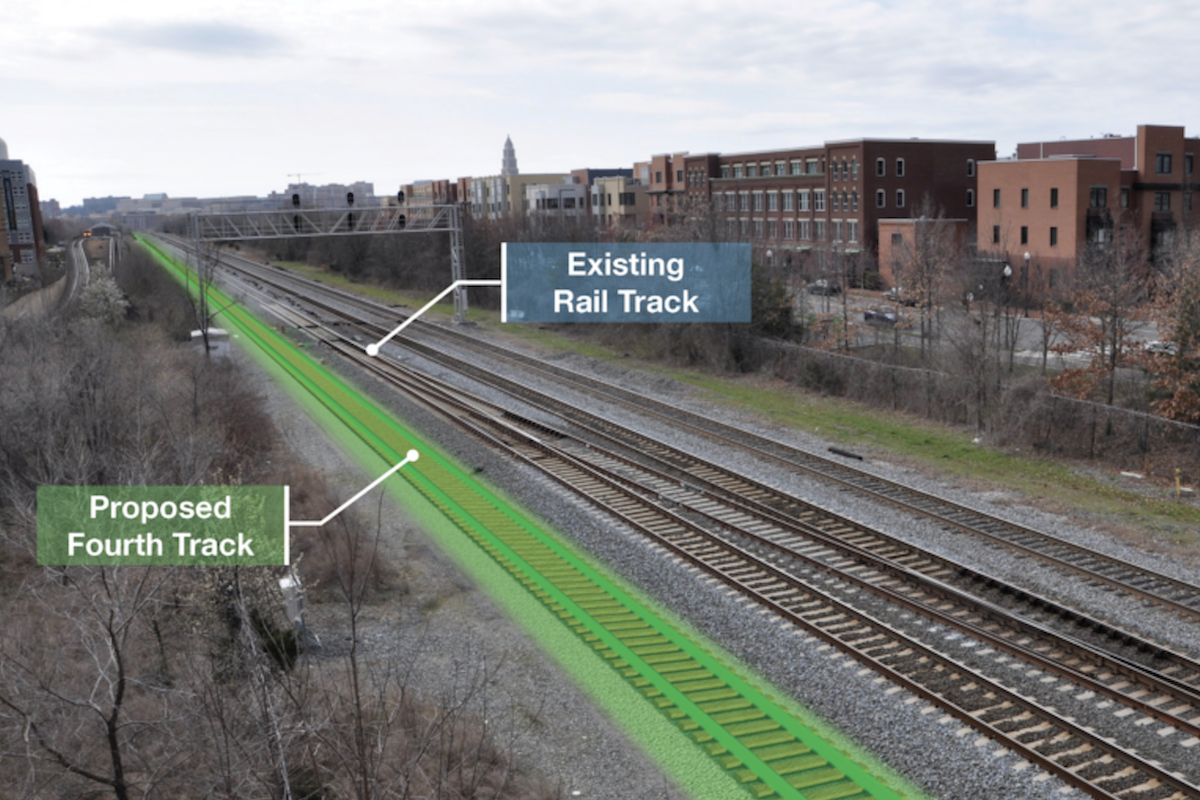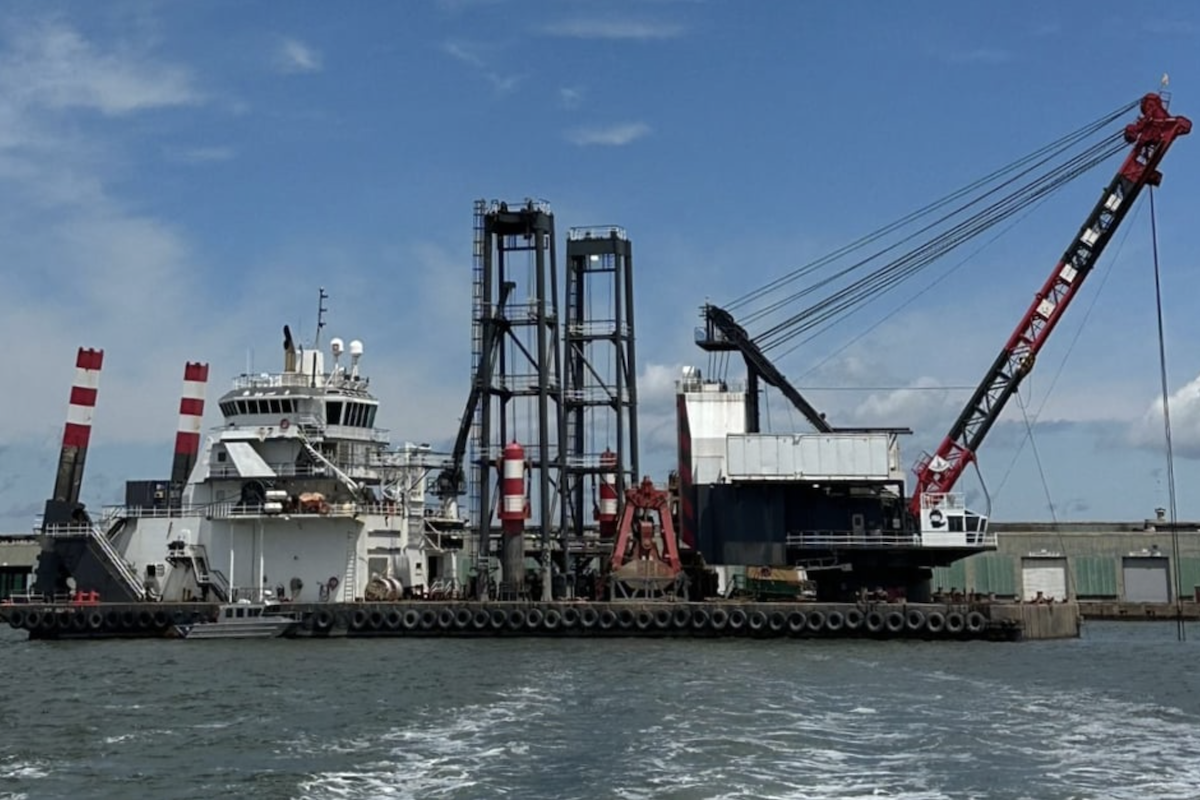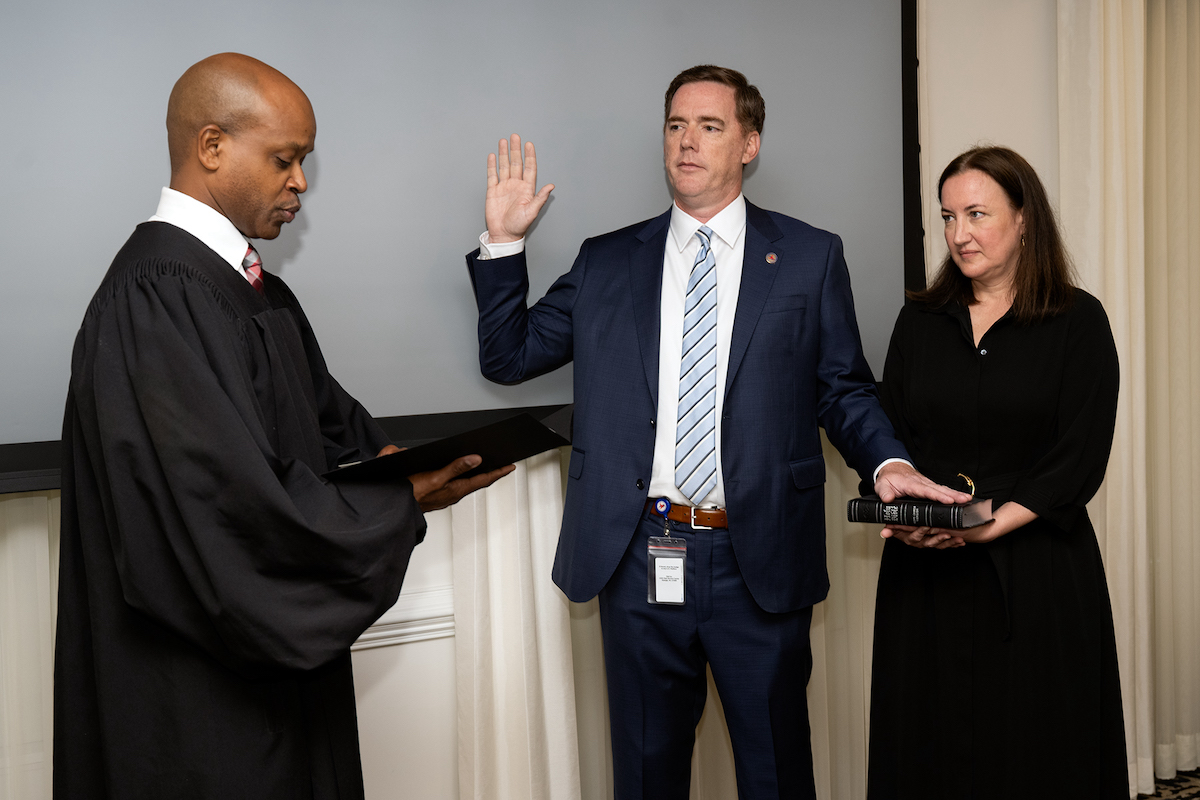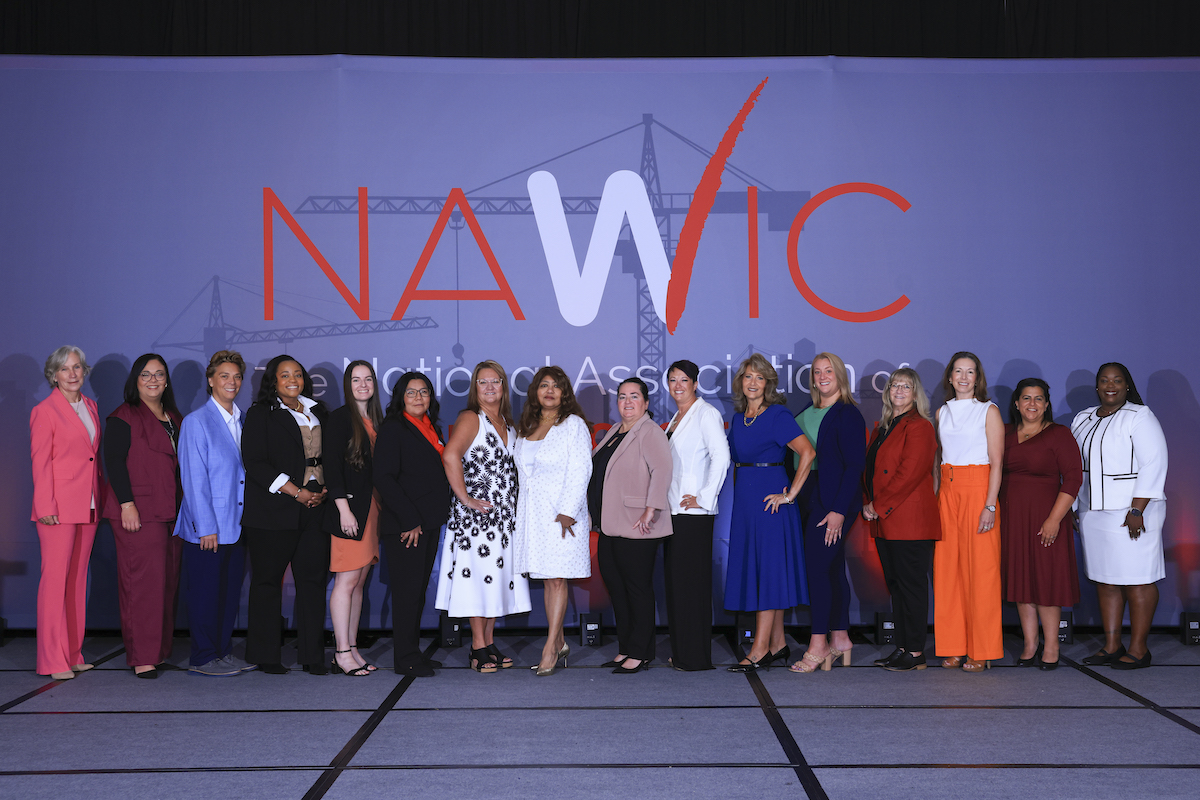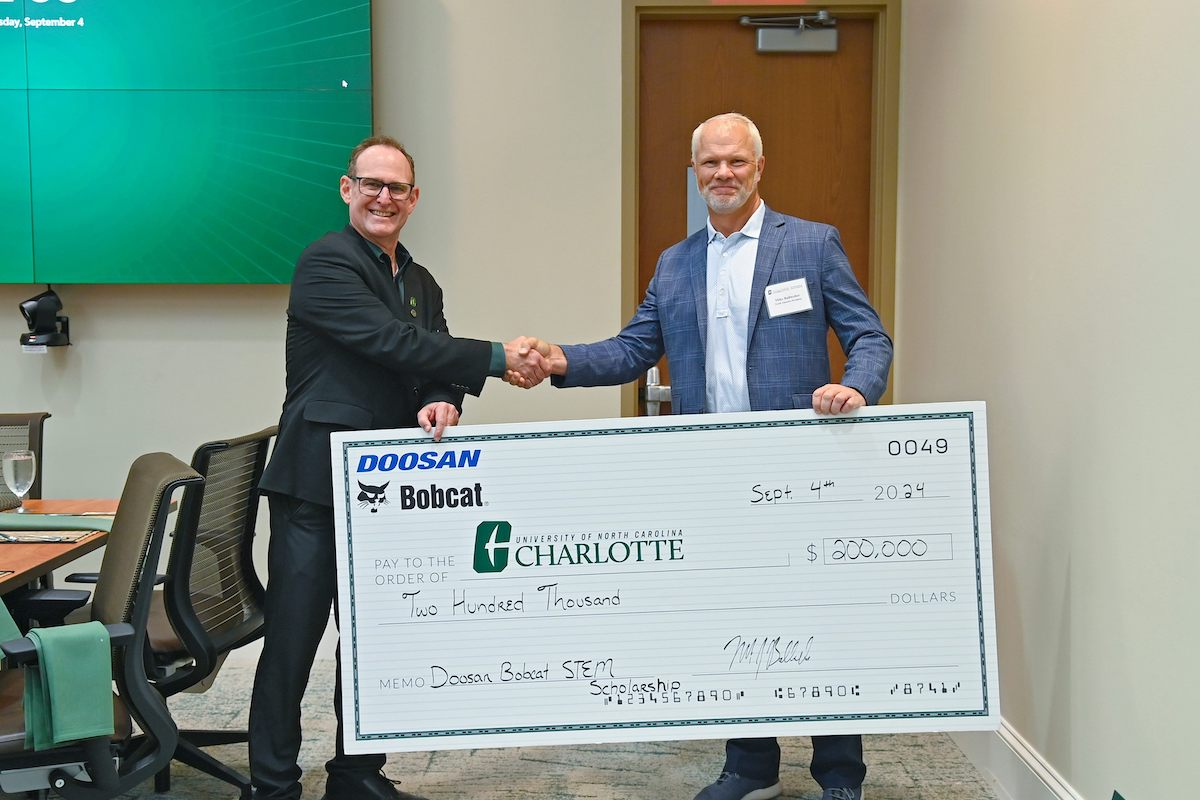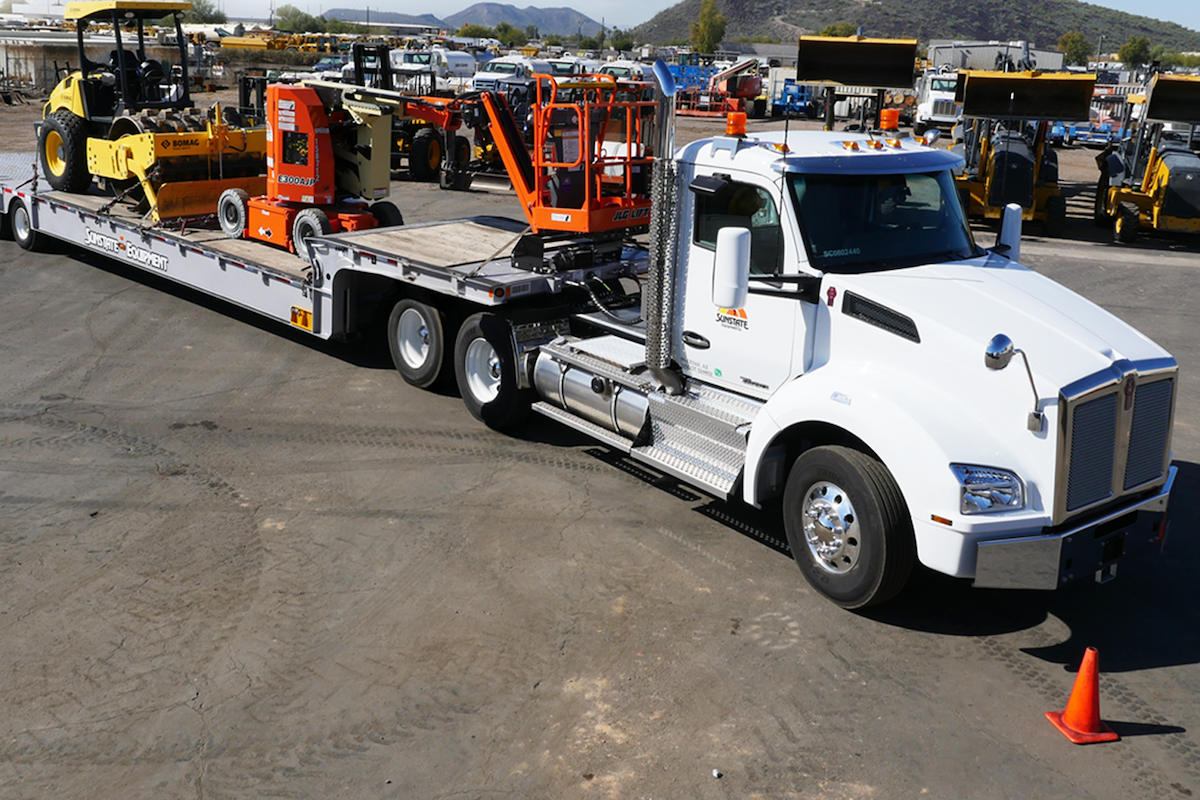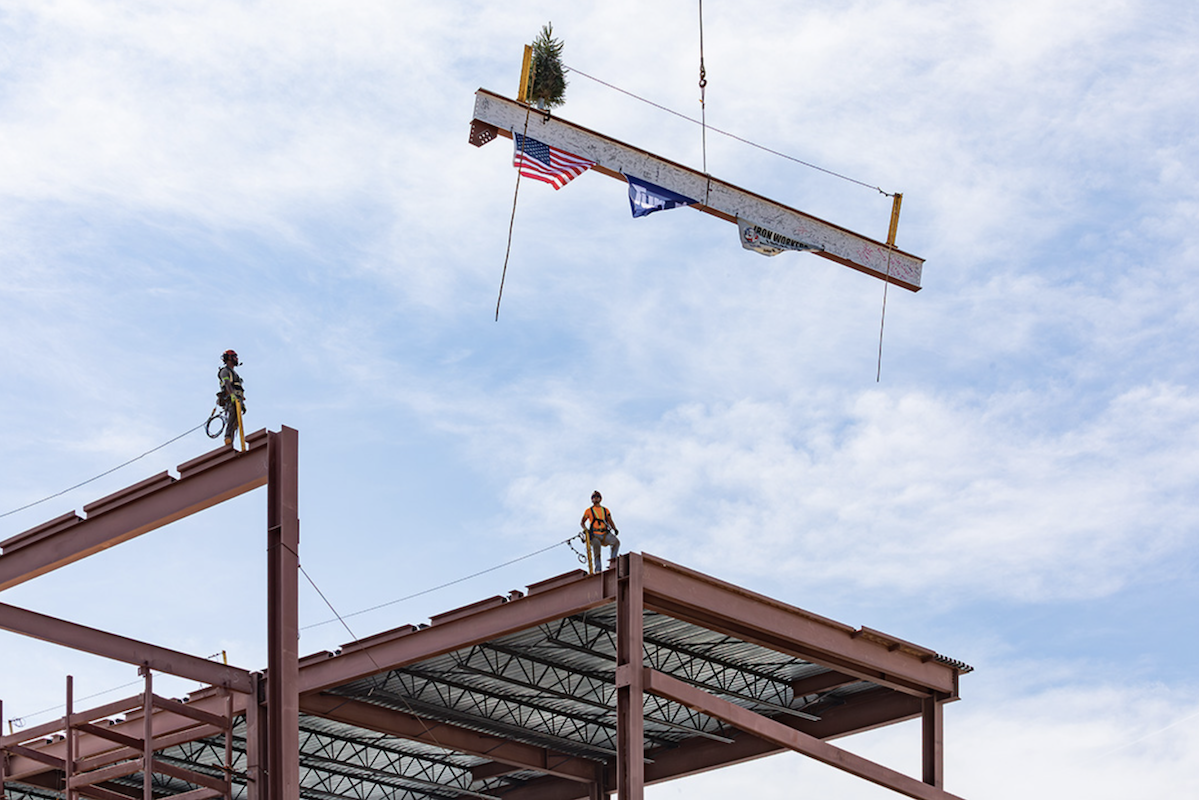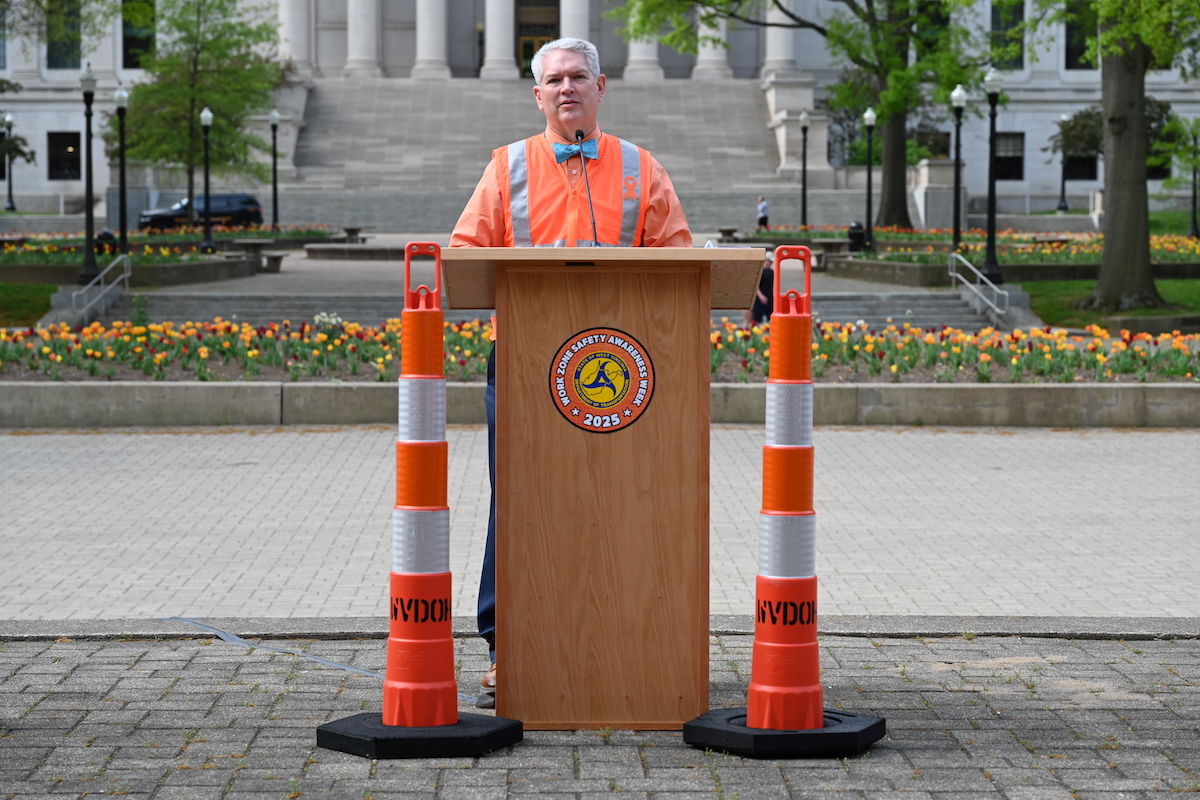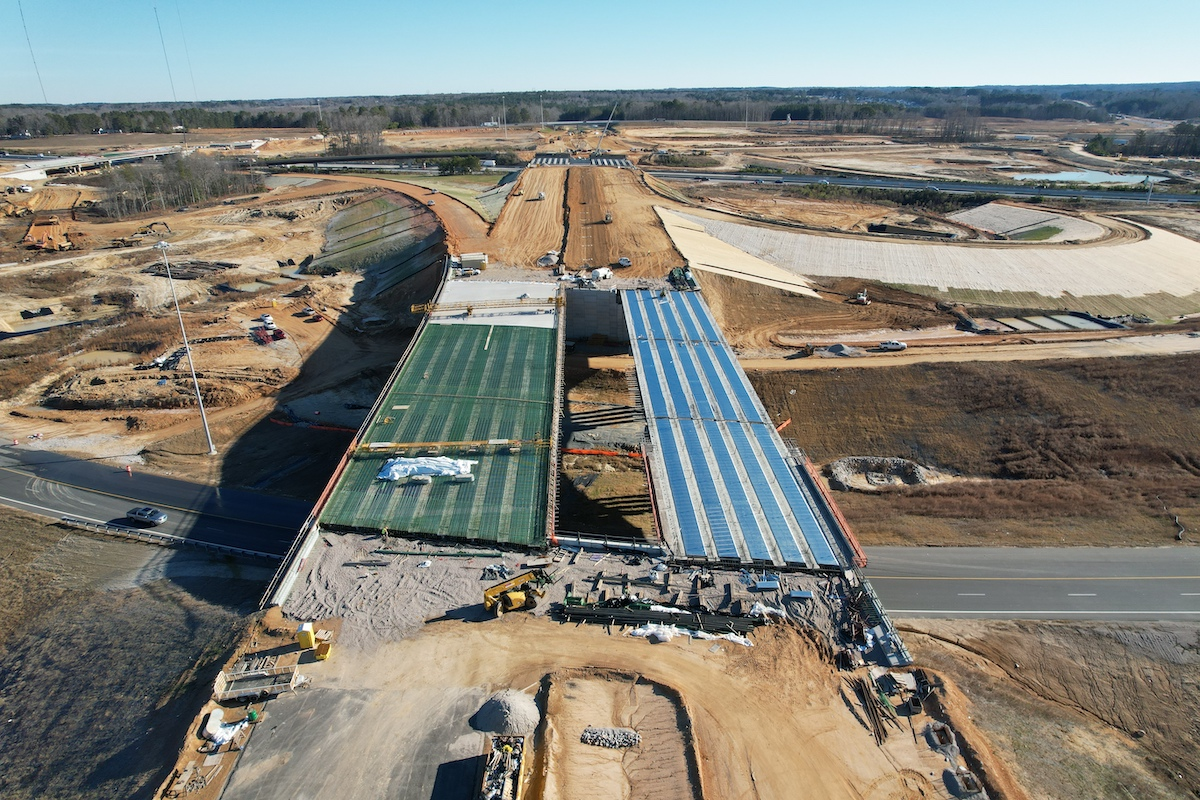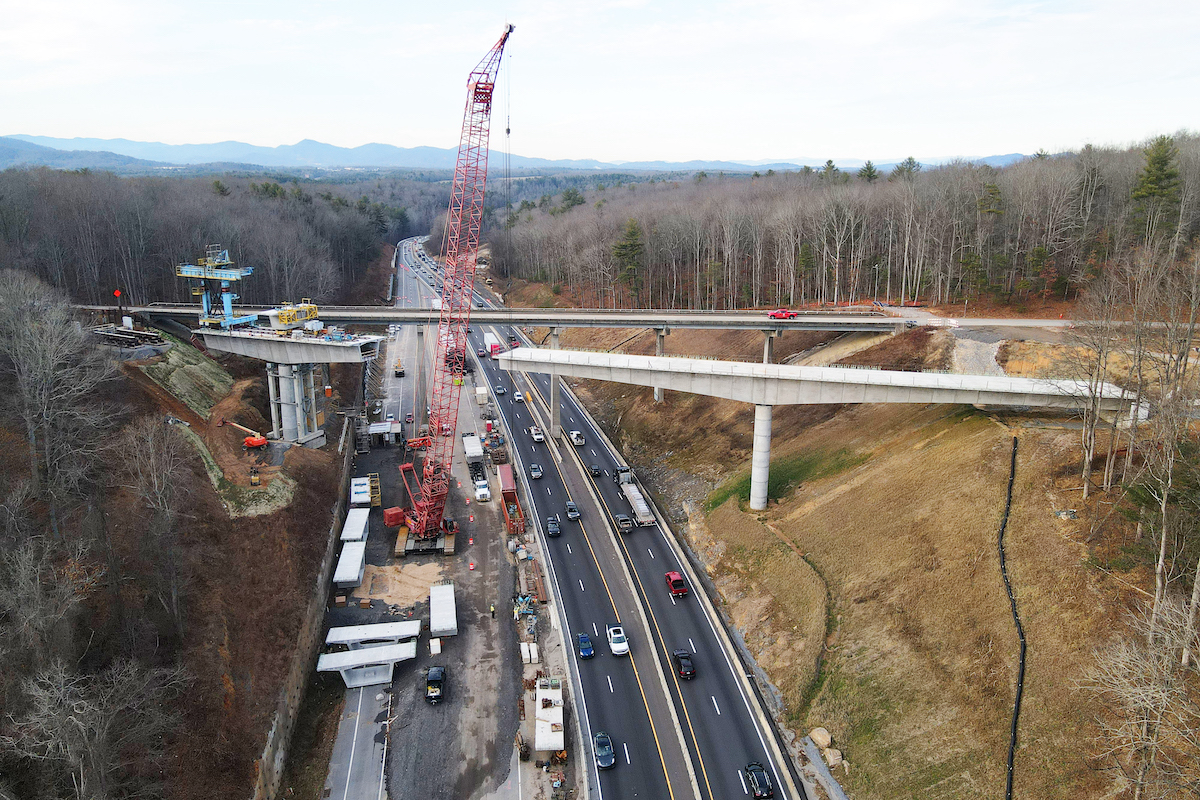Daily traffic counts in the project area range from 80,000 to 90,000 vehicles, depending on the location. This number is expected to reach 135,000 vehicles by 2035. The roadway experiences bottlenecks regularly during rush hour.
In addition to widening the Beltline, the team is lowering the grade of a local road and constructing new bridges, including one for the Norfolk Southern Railway/North Carolina Railroad/CSX Transportation. Overall, nine existing bridges are being replaced and six new bridges are being built. One bridge is being demolished without a replacement.
Other construction includes a new connector road that will link Blue Ridge Road and Hillsborough Street. “The purpose for the Blue Ridge Road portion of the project is to reduce traffic congestion and train-related conflicts with vehicles and pedestrians,” says Aaron Moody, Assistant Director of Communications for NCDOT.
Other improvements include replacing pavement and bridges and upgrades to interchanges. The roadway and interchanges have substandard design elements, such as poor sight lines, narrow shoulders and medians, and short acceleration and deceleration lanes. The crash rate on the Beltline is three times the state average for similar interstates in urban areas.

| Your local Trimble Construction Division dealer |
|---|
| SITECH Mid-South |
The project will improve traffic flow, access, and efficiency along the Beltline, according to Moody.
“This is a high-profile project in a very developed area with numerous third-party involvement/interactions, outside of your typical third-party utilities, the traveling public, and property owners,” Moody says. There are many North Carolina State University facilities in the area, as well as the Meredith College campus, the North Carolina Museum of Art, and the North Carolina State Fairgrounds. “They all bring a different dynamic for stakeholder coordination and involvement that are atypical of standard highway construction.”
Because of the project stakes and the parties involved, there has been a higher-than-normal amount of communication and meetings. The meetings are to keep everyone informed and aware of each stakeholder's wants and needs concerning access to their facilities during construction and what their needs are post-construction.
A unique aspect of the project, according to Moody, is the diverging-diamond interchange (DDI) transformation at the Western Boulevard interchange, one of the main thoroughfares into North Carolina State University.
“Due to the short time available for the conversion to the DDI in this area,” says Moody, “asphalt wedging was used for slope and grade adjustments during the conversion to minimize the time needed to complete the intersection and the amount of time spent working adjacent to live traffic.”
The conversion was completed in phases to accommodate the work occurring before the demolition of the existing I-440 structures over Western Boulevard, with the full width and number of lanes added later as these obstructions were removed. “Maintaining existing drainage at this interchange while also building new systems that can handle more capacity was a considerable undertaking,” Moody says.
The general contractor on the project is the Lane Construction Corporation. They have worked on multiple transportation projects across the state of similar size and scope.
The $475 million project has received funding from multiple sources. The primary source of funds is the federal National Highway Performance Program with $122 million in GARVEE bonds and a $19 million federal TIGER grant. The original contract was $346.2 million. Additional elements to the scope have led to the price increase.
The additions include asbestos inspection and abatement, video inspection of existing drainage, cleaning and repair of existing drainage, design revisions and additional construction to minimize right-of-way impacts, and additional work to minimize right of way impacts.
When the project is complete, the Beltline around the growing Raleigh metropolis will have increased capacity. The associated improvements at interchanges will reduce congestion and resolve the bottleneck issue, improving mobility and safety for drivers in the region. The other project elements will improve traffic flow around major destinations in the area.




















